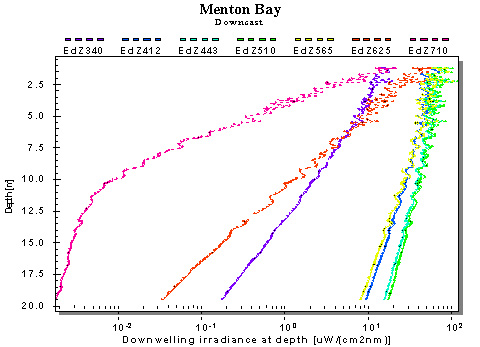The diffuse attenuation coefficient (abbreviated Kd(λ)) quantifies the rate of decrease of sunlight underwater in a narrow spectral band. It is often calculated from vertical profiles of irradiance; this rate of decrease is typically logarithmic.
One of the most common descriptors of the penetration of sunlight in water is the diffuse attenuation coefficient, K(λ), or Kd(λ) when calculated from vertical profiles of downwelling irradiance, Ed(λ). Where z is depth, this relationship is:

For homogeneous waters, a plot of the logarithm of Ed(λ,z) versus z forms a straight line, and Kd(λ,z) is the localized slope of that line (Figure 1).

The equation defining Kd can also be written as Ln[Ed(λ,z)/Ed(λ,z+dz)]=Kd(z)
This is a linear equation of the form Y=mx where m=Kd is the slope.
When calculating Kd from vertical profiles of irradiance, irradiance values do not have to be calibrated as the irradiance units drop out.
